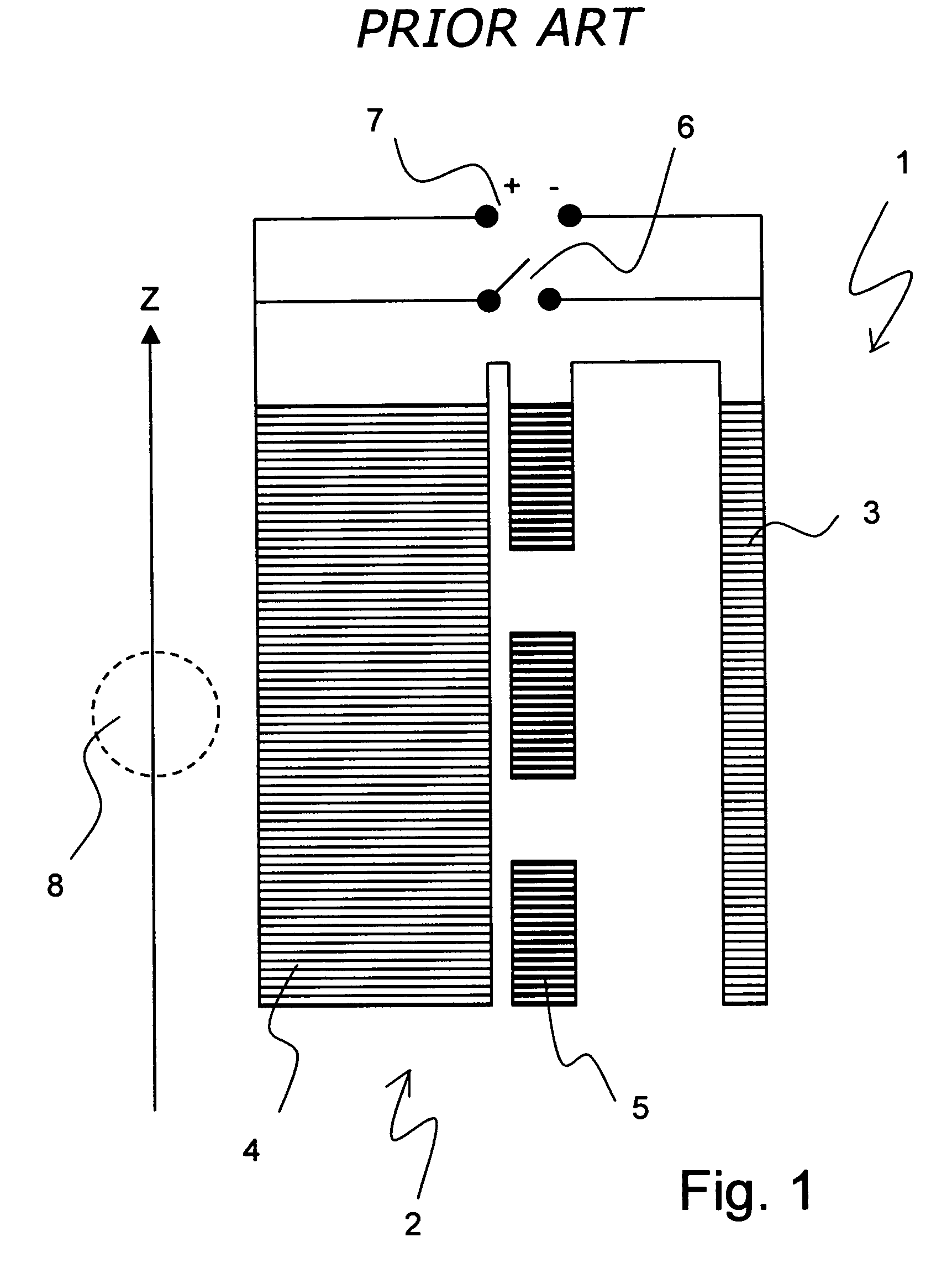Method for homogenizing a super-conducting NMR magnet
- Summary
- Abstract
- Description
- Claims
- Application Information
AI Technical Summary
Benefits of technology
Problems solved by technology
Method used
Image
Examples
case 1
asured B2*-gradient of the overall system is positive. If the first partial region 21 (homogenization part) is short-circuited at the right time, and the magnet arrangement 20 is further charged, a negative additional current is induced into the short-circuited first partial region 21, reducing its positive B2 gradient such that when the final field B has been reached, the overall B2 gradient is eliminated in connection with direct influence of the second partial region 22 on the B2-gradient.
case 2
asured B2*-gradient is negative. In this case, the target field B must be surpassed and the first partial region 21 must be short-circuited. If the remaining magnet arrangement 20 is now discharged, a positive additional current is induced in the short-circuited first partial region 21 which increases the B2 gradient in this partial region such that when the final field B has been reached, the overall B2 gradient is eliminated in connection with the direct influence of the second partial region 22 on the B2-gradient.
FIG. 3 shows a B* dependence for each of both above cases, as a function of the spatial parameter z. In the first case (right-hand curve) the B* field rises in the vicinity of z=0, locally parabolic, i.e. B2*>0. However, in the second case (left-hand curve) the B* field drops like a parabola in the vicinity of z=0, i.e. B2*<0.
In both cases, the lifts of zero and second order of the two partial regions b0(1), b2(1), b0(2), b2(2) and the inherent and mutual inductan...
PUM
 Login to View More
Login to View More Abstract
Description
Claims
Application Information
 Login to View More
Login to View More - R&D
- Intellectual Property
- Life Sciences
- Materials
- Tech Scout
- Unparalleled Data Quality
- Higher Quality Content
- 60% Fewer Hallucinations
Browse by: Latest US Patents, China's latest patents, Technical Efficacy Thesaurus, Application Domain, Technology Topic, Popular Technical Reports.
© 2025 PatSnap. All rights reserved.Legal|Privacy policy|Modern Slavery Act Transparency Statement|Sitemap|About US| Contact US: help@patsnap.com



